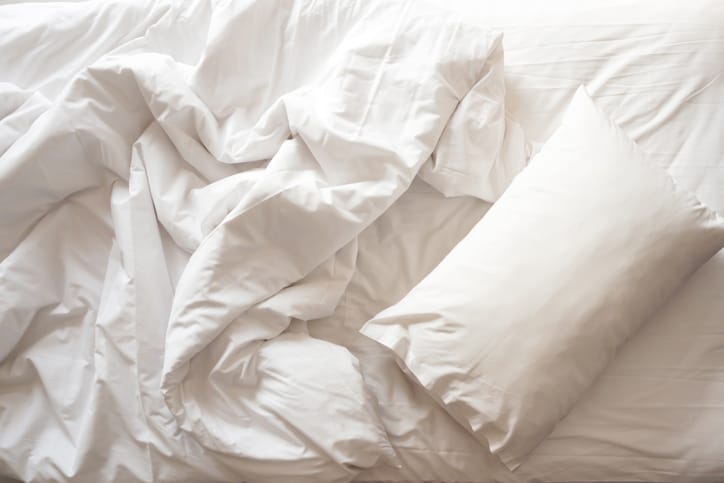Preventing Bed Bugs
Bed bugs are small, reddish-brown blood-sucking, wingless insects. Bedbug bites usually clear up without treatment in a week or two. Bed bugs aren’t known to spread disease, but they can cause an allergic reaction or a severe skin reaction in some people.
Bedbugs are about the size of an apple seed. They hide in the cracks and crevices of beds, box springs, headboards, bed frames and other objects around a bed and come out at night to feed on their preferred host, humans. The risk of running into bedbugs is higher if you spend time in places where nighttime guests come and go often — such as hotels, hospitals or homeless shelters.
If you suspect that you have an infestation, here are the steps you should take:
Make sure you really have bed bugs, not fleas, ticks, or other insects.
You can compare your insect to the pictures on our Identifying bed bugs page or do a web search to compare to a collection of bed bugs pictures from many angles.
Don’t panic!
It can be difficult to eliminate bed bugs, but it’s possible. Don’t throw out all your things because most of them can be treated and saved. Throwing stuff out is expensive, may spread the bed bugs to other people’s homes and could cause more stress.
Reduce the number of hiding places — Clean up the clutter.
A cluttered home provides more places for bed bugs to hide and makes locating and treating them harder. If bed bugs are in your mattress, using special bed bug covers (encasements) on your mattress and box springs makes it harder for bed bugs to get to you while you sleep. Leave the encasements on for a year. Be sure to buy a product that has been tested for bed bugs and is strong enough to last for the full year without tearing.
Regularly wash and heat-dry your bed sheets, blankets, bedspreads, and any clothing that touches the floor.
This reduces the number of bed bugs. Bed bugs and their eggs can hide in laundry containers/hampers Remember to clean them when you do the laundry.
Do-it-yourself freezing may not be a reliable method.
While freezing can kill bed bugs, temperatures must remain very low for a long time. Home freezers may not be cold enough to kill bed bugs; always use a thermometer to accurately check the temperature. Putting things outside in freezing temperatures could kill bed bugs, but there are many factors that can affect the success of this method.
Kill bed bugs with heat but be very careful.
Raising the indoor temperature with the thermostat or space heaters won’t do the job. Special equipment and very high temperatures are necessary for successful heat treatment. Black plastic bags in the sun might work to kill bed bugs in luggage or small items, if the contents become hot enough. Bed bugs die when their body temperatures reach 113°F. To kill bed bugs with heat, the room or container must be even hotter to ensure sustained heat reaches the bugs no matter where they are hiding
Don’t pass them on to others.
Bed bugs are good hitchhikers. If you throw out a mattress or furniture that has bed bugs in it, you should slash or in some way destroy it so that no one else takes it and gets bed bugs.
Reduce the number of bed bugs to reduce bites.
Thorough vacuuming can get rid of some of your bed bugs. Carefully vacuum rugs, floors, upholstered furniture, bed frames, under beds, around bed legs, and all cracks and crevices around the room. Change the bag after each use so the bed bugs can’t escape. Place the used bag in a tightly sealed plastic bag and in an outside garbage bin.
Turn to the professionals, if needed.
Hiring an experienced, responsible pest control professional can increase your chance of success in getting rid of bed bugs. All American Pest is here for you. Contact us today, and we can create the right plan of attack for you!





